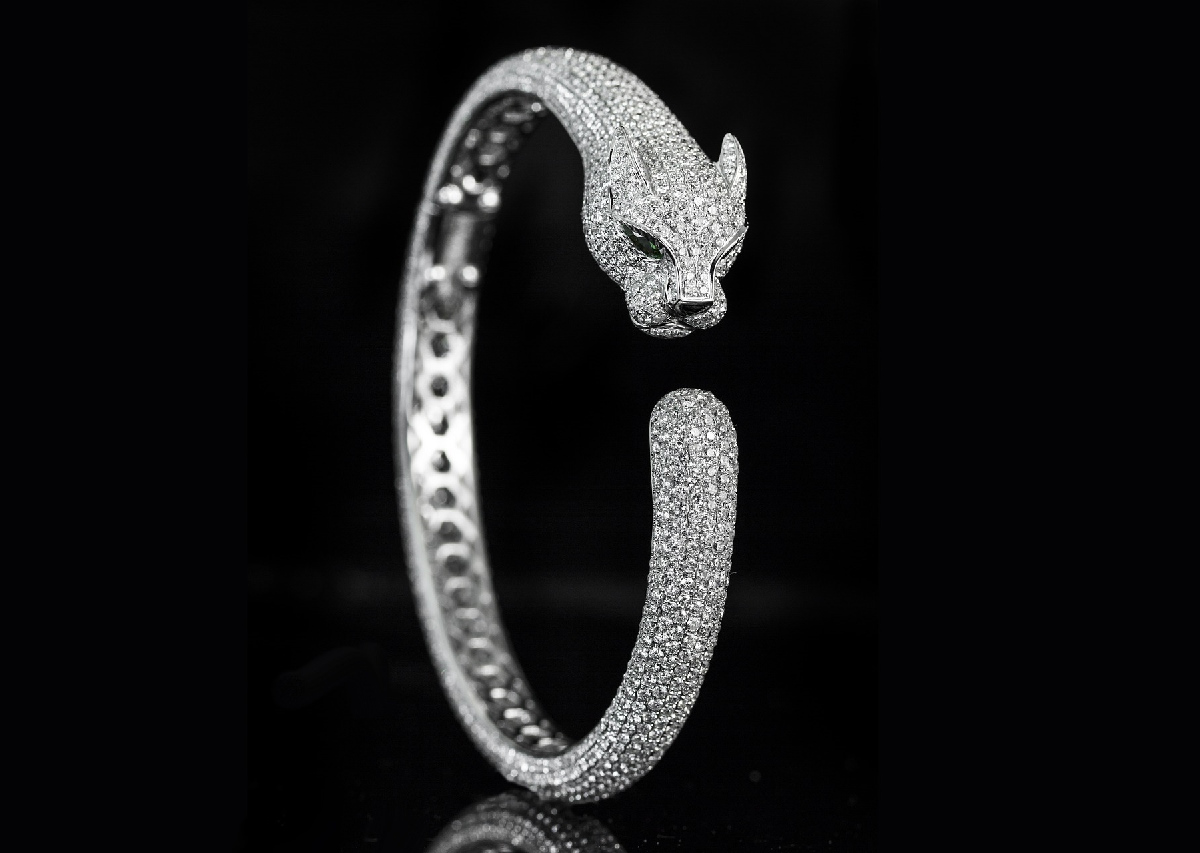AI for Jewelry Business: Design, Marketing & Try-On Explained

AI in the jewelry industry now influences every step, such as trend forecasting, design, merchandising, and post-sale service. Generative design tools then translate those insights into CAD concepts at record speed, while AI-powered try-on experiences for jewelry websites remove the guesswork for shoppers who prefer to browse from home.
Together, these advances position AI for jewelry business growth by cutting lead times, reducing wasted materials, and personalizing the path to purchase - signals of where the future of jewelry industry innovation is headed.
AI’s Impact on Design & Manufacturing
Predictive engines crawl runway photos, Pinterest boards, and Instagram tags, ranking stone cuts, metal finishes, and color palettes by rise-and-fall probability. Using that insight, an AI model for jewelry adjusts CAD templates on the fly, recommending millimeter-level tweaks that match the forecast. Designers keep the artistic vision, yet product teams move from sketch to prototype in days instead of weeks.
Generative networks go a step further. Feed a rough sketch or a gemstone specification into platforms like Autodesk Dreamcatcher, and the software produces dozens of weight-optimized silhouettes ready for 3D printing. Because these AI models for jewelry incorporate historical sales data, they flag concepts likely to underperform before precious metals hit the casting floor.
Manufacturing lines benefit, too. Computer-vision inspectors catch micro-fractures in stones as small as 0.02 mm, while reinforcement-learning bots schedule furnace cycles to balance throughput with energy costs. Each upgrade tightens quality control without adding headcount.
Legal questions haven’t disappeared. When an algorithm draws on a global image corpus, authorship can blur. Forward-thinking houses now log every training source and revision inside blockchain-based ledgers, creating audit trails that satisfy both regulators and collectors. Craftsmanship still matters; AI simply expands the toolset, pointing toward a future of jewelry industry production that is faster, smarter, and more sustainable.
AI Models & Tools for Jewelry
Below is a quick-reference kit of AI models for jewelry that you can spin up, demo, or add to your stack today.
AI Models for Design
- Pencil – 3D-native platform that outputs ready-to-print STL files and applies construction rules automatically, cutting CAD time to minutes.
- BLNG AI – 2D generator for hyper-real concepts; great for mood-boarding before a CAD hand-off.
- Midjourney – fast idea boards and marketing visuals; prompt with gemstone shapes or metal finishes to spark options.
- Autodesk Dreamcatcher – generative design engine that reshapes mounts for weight savings and strength; handy for avant-garde pieces.
AI Models for Manufacturing
- IBM Visual Inspection – cloud vision service tuned for precious-metal surfaces; integrates with most IP cameras.
- NVIDIA Metropolis for Manufacturing – edge AI toolkit that scales QC cameras without custom coding.
AI Models for Try-On
- Perfect Corp Virtual Try-On Suite – drop-in SDK covering rings, bracelets, earrings, and watches; runs across web and native apps for friction-free AI-powered try-on experiences for jewelry websites.
- GlamAR – browser-based AR that overlays rings, necklaces, and earrings in real time; no native app required.
- iPhygital Virtual Try-On – white-label module showcased at JCK 25; supports multi-piece stacking and wrist sizing.
- SellerPic AI Try-On – API-first solution for quick product page embeds covering rings and eyewear.
AI Models for Marketing & Chatbots
- Jotform AI Chatbot for Shopify – no-code jewelry store AI chatbot that answers sizing, materials, and order questions straight from your catalog.
- Manifest AI Shopping Assistant – GPT-powered concierge that recommends matching pieces, nudges cart recovery, and speaks 140+ languages.
- Crowdy AI Chatbot – omnichannel bot built for luxury retailers; switches to human staff for high-ticket consults.
These purpose-built engines let you test a concept, moving you closer to the future of the jewelry industry where data, creativity, and craftsmanship coexist.
Enhancing Customer Experience with AR
Virtual try-on once felt like science fiction; today it is an everyday step on leading jewelry sites. AI-driven hand-tracking and depth-estimation engines anchor rings, bracelets, and necklaces to live video, giving shoppers a crystal-clear preview before they click “add to cart.” Tiffany & Co. saw online revenue climb roughly 30% after embedding an AI-augmented try-on tool in its app, a lift echoed across the sector. Deloitte reports that retailers using similar AI-powered try-on experiences for jewelry websites enjoy conversion rates about 40% higher than peers without the feature, alongside a 20% bump in average order value.
These gains come from confidence. Customers rotate their hand, test different carat sizes, and even swap lighting conditions - all inside the browser. The same computer-vision stack feeds real-time recommendations, suggesting matching bands or stackable rings that fit the exact finger profile, pushing average order values even higher. For in-store traffic, mirror-style AR kiosks replicate the online experience and capture shopper data for later retargeting, knitting together a seamless omnichannel journey. In short, AI-guided AR has moved from novelty to revenue engine, setting a new baseline for the future of jewelry industry customer experience.
Balancing Tradition and Technology
Heritage craft still defines luxury jewelry. Master setters, casters, and engravers give every piece a tactile story that machines can’t replace. Leading maisons keep that human touch by pairing AI for jewelry business tasks like trend analytics or defect detection with hands-on ateliers where bench jewelers finish each stone setting. Bulgari, for example, runs a new training academy alongside its AI-enabled design lab; apprentices spend six months learning classic techniques before touching generative software, so digital innovation never erases savoir-faire.
Designers cite a similar balance on the creative side. Brands such as Boucheron feed sketches into AI models for jewelry concepting, but senior artisans still refine prongs, gallery heights, and clasp tolerances at the bench - a workflow that marries pixel-level experimentation with centuries-old hand skills.
Collectors value the result: pieces carry both algorithm-guided originality and the subtle marks of manual finishing. By treating AI as a studio assistant - never the sole creator - houses protect legacy aesthetics while moving faster from concept to showcase, pointing toward a future of jewelry industry production where art and code coexist.
AI Implementation Checklist
- Unify Your Data Sources - Pull sketches, CAD files, POS history, and stone certificates into one warehouse so ai for jewelry business engines can learn from the full picture, not fragmented snapshots.
- Clean & Label Before You Train - Dedicate time to correct carat weights, metal alloys, and SKU tags; models only add value when their inputs are trustworthy.
- Pilot Low-Risk Use Cases First - Launch a virtual try-on widget or a computer-vision defect detector to prove ROI in weeks before investing in larger roll-outs.
- Upskill the Bench - Offer CAD-plus-AI workshops to goldsmiths and setters.
- Fuse Supply-Chain Signals with QC - Feed live freight and refinery data into manufacturing AI models to reroute casting schedules and soften the impact of raw-material delays.
- Deploy an AI Chatbot Gradually - Start on FAQ pages, then expand to sizing and gifting advice; every solved query frees human associates for bespoke commissions.
- Set Up an IP & Ethics Board - Define ownership of AI-generated designs and guard against data bias before algorithms hit full production.
The Future of AI & AR in Jewelry
Market signals point to a decade defined by immersive shopping and data-guided creation - the next chapter in the future of jewelry industry growth. Analysts value the global virtual try-on market at about $9 billion today, forecasting a six-fold jump by 2030 as AI-powered try-on experiences for jewelry websites become baseline rather than bonus. Industry trackers predict that eight in ten online jewelry retailers will offer live AR fitting rooms by 2028, making size guesswork and hesitant carts relics of the past.
Design studios are heading the same way. Generative engines learn from every sell-through report, suggesting gemstone cuts and metal alloys most likely to resonate with each micro-segment. That feedback loop supports true one-of-one pieces without exploding cost, pushing personalization to center stage. Provenance tech follows close behind: blockchain verification is on course to secure two-thirds of luxury jewelry lines within the next two years, giving buyers instant proof of origin whenever they scan an NFC tag.
Sustainability gains ride in tandem. Predictive demand planning trims over-production, while AI-optimized casting cuts scrap metal and lowers kiln energy draw. As recycled gold and lab-grown stones win mindshare, AI models for jewelry manufacturing help brands validate eco-claims with hard data - turning transparency into a competitive edge.
Taken together, these threads weave a clear picture: artificial intelligence won’t replace craftsmanship, but it will rewrite the timeline from concept to keepsake and deepen the connection between maker and wearer. Brands that embrace the duo of AI and AR now will set the pace for the next generation of jewelers and collectors alike.
FAQs on AI in the Jewelry Industry
AI-powered try-on experiences for jewelry websites let shoppers see rings, earrings, and necklaces on themselves in real time. Combined with recommendation engines that surface matching pieces and optimal sizes, these tools lift conversion rates and reduce returns because buyers know exactly what they are getting.
Generative CAD engines such as Autodesk Dreamcatcher and Pencil create multiple weight-optimized variations from a single sketch, while diffusion models like Midjourney accelerate concept art. Both types let designers test forms, stones, and metal mixes long before physical prototyping.
No. Low-code platforms such as Manifest AI or Jotform Chatbot plug directly into Shopify product feeds. After a brief catalog sync, the bot can answer sizing questions, suggest complementary items, and guide shoppers through checkout.
Bring together past sales by style and stone, detailed SKU attributes (metal, cut, carat, finish), seasonality patterns, and any social or runway imagery that signals upcoming trends. Clean, labeled data delivers far better predictions than a larger but messy dataset.
Not likely. AI accelerates routine tasks, but final aesthetics and craftsmanship still rely on human skill. The most successful brands treat AI as a studio assistant that frees artisans to focus on creativity and fine finishing.
